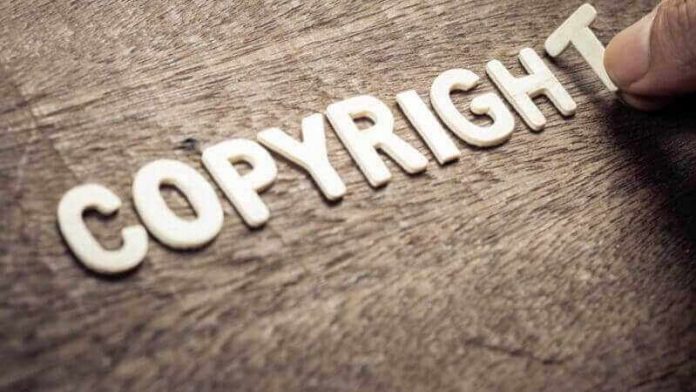This article is written by Oishiki Bansal, a student of Symbiosis Law School, Noida. The article explains the judgment given by the intellectual property appellate board in the case of Music Broadcast Ltd. v. Tips Industries Ltd. & Ors.
Table of Contents
Introduction
The growth and protection of intellectual property have always been a topic of great debate and discussion. Copyrights are one of the intellectual property rights which aims to protect the creativity of an artist. In the recent cases under the Intellectual Property Appellate Board, the issue of royalty given to the owner of the Copyright holder was discussed. This article aims to explain the judgment of the appellate board in one of these cases and also provides insights about the Intellectual Property Appellate Board, Section 31D of the Indian Copyright Act, 1957, and Rule 31 of Copyrights Rules, 2013.
Intellectual Property Appellate Board
The Intellectual Property Appellate Board (hereinafter IPAB) was established on 15th September 2003 as an appellate body by the government of India. IPAB was established to oversee the cases relating to the Indian Trademarks Act, 1999, and the Geographical Indications of Goods Act, 1999. The power to resolve the appeals under the Patents Act, 1970, and the Copyright Act, 1957 was given later in the year 2007. Thus, all the cases relating to the disputes over intellectual property rights were transferred to the IPAB. In December 2019, the Ministry of Commerce and Industry also released a notice stating that the judgment given by the IPAB can be directly challenged in the Supreme Court forgoing the old tradition of challenging the judgment of IPAB in the High Court and then the Supreme Court. However, on 4th April 2021, the President gave approval to the “Tribunal Reforms Ordinance, 2021” abolishing the IPAB due to its shortcomings in its working.
The Copyright Act, 1957
The Copyright Act, 1957 aims to protect the Copyrights as registered by the literary and music artists. Copyrights are any original idea turned into an expression that can be protected by the law of land. The Copyright Act protects the registered Copyright of an artist for the lifetime of the creator and in addition for 60 years after the death of the creator.
Section 31D of the Indian Copyright Act, 1957
The 2012 Copyright Amendment Act introduced an amendment in Section 31D of the Copyright Act, 1957. This Section deals with the broadcasting or performance rights of an already published Copyrighted literary work or music or sound recording. This Section states that any broadcasting company essentially radios and television, desirous of reproducing or using or transmitting any literary work, musical work, or any sound recording which has already been published would have to comply with this Section of the Act. The Section further states that any broadcasting company who wants to communicate any artistic work has to give notice to the creator and also has to pay a royalty to the right holder that is fixed by the Copyright board. However, The Finance Act, 2017 has replaced the term ‘Copyright board’ with the appellate board. Furthermore, the Department of Industrial Policy and Promotion (DIPP) issued an office memorandum in September 2016 which broadened the scope of intermediaries involved in Broadcasting. The memorandum stated that as the word ‘broadcast’ means communicating to the public, therefore any means used to communicate the literary work will come under the Ambit of Section 31(D) Copyright Act, 1957. In the case of Saregama Ltd vs. The New Digital Media & Ors(2016), the High Court of Calcutta held that violation of Section 31(D) results in the violation of Copyright. The Court said that if a Broadcasting Company is communicating the literary work of an artist it needs to pay the royalty and if not it will lead to infringement of copyright held by the artist.
Copyright Rules, 2013
The Ministry of Human Resource and Development now known as the Ministry of Education released the Copyright Rules of 2013 which provided New provisions and amendments in the Copyright Act of 1957. Some of these provisions include increasing the maximum fees that could be asked at the time of registration of Copyright, provisions relating to registration of Copyright societies, new Rules for statutory license and broadcasting of Copyrighted work, etc.
Rule 31 of Copyrights Rules, 2013
Rule 31 of the Copyrights Rules, 2013 states the manner of determining royalties that are needed to be paid by the broadcasting companies. The steps that are to be followed by the Copyright Board to decide the amount of royalty are as follows –
- A notice showing an intention to fix the royalty rates is to be issued by the committee as soon as it is established.
- The notice issued will be published in the Official Gazette of India and two other newspapers having nationwide circulation. In addition, the notice should also be published on the website of the Copyright board.
- Any broadcasting company or artist can give suggestions for fixing of royalties rates within thirty days of the release of such notice. The broadcasting companies and artists can provide different rates for different forms of work.
- The board shall consider the recommendations given by such broadcasting companies and artists.
- The board shall fix the royalties rates within a period of two months after receiving the suggestions. The rates are to be determined differently for different forms of works.
- The Copyright Board has to determine the royalties to be paid separately by the television and radio broadcasting company to the owners of the Copyright under Section 31(D) of the Copyright Act, 1957.
- Following elements are to be considered while determining the royalty –
- The time slot of the broadcast: different rates for different time slots inclusive of repeat broadcast are to be considered.
- Rates depending on the different classes of work.
- Varying rates for different nature of the use of work.
- The existing standards of royalties in different fields of work.
- The terms and conditions of the Grant of Permission Agreement (GOPA), an agreement between the Ministry of Information and Broadcasting and the broadcaster for Operating Frequency Modulation (FM) Radio Broadcasting Service.
- Other matters considered relevant by the board.
- While determining the royalties of payment the Copyright board shall consider the following –
- Works that are included in the scheduled programs.
- Works that are newly published hence not included in the scheduled program.
- Works made available to the public in cases of an emergency.
- Using work in excess of what is mentioned in the contract, for example, using for more time period than mentioned, using at a geographical location not allowed, etc.
- The rate of royalties is to be revised once a year by the board.
Music Broadcast Ltd. v Tips Industries Ltd. & Ors. (2020)
Facts of the case
In the case of Music Broadcast Ltd. v Tips Industries Ltd. & Ors. (2020), ten applications were filed by Music Broadcast Limited under Section 31(D) of the Copyright Act,1957 and Rule 31 of the Copyright Rules 2013 asking for statutory license and also asking the Tribunal to fix the rate of royalties that are to be provided to the owners of the Copyright for communication of sound recordings to the public using a radio broadcast. With respect to the applications, the IPAB issued a notice on 22nd September 2020 to the public seeking recommendations.
The Indian Performers Rights Society (hereinafter referred to as IPRS) issued an application on 17th September which included a notice. The IPRS’s notice was based on the premise that when the songs are communicated through a radio broadcast two types of implications arise relating to the payment of royalties. The first one being the exploitation of the rights of IPRS and the second one being the right to receive the royalties that lie in the hands of the music companies or their successors. The IPRS claims that the music companies are its assignee because the owner of the Copyright of sound works namely, the music companies like Sony Music India, TIPs Industries Ltd., etc, have assigned their work to IPRS through the deeds of assignment.
The IPRS also contended that while fixing the royalties for the sound recording that are broadcasted by the radio the royalties for underlying work in music such as lyrics and composition of music should also be fixed. Hence, filing a fresh application on 23rd September.
The applications regarding the expiration of the license provided by the Copyright board were also filed. The applicant was concerned with the implications as to what would happen if an order of maintenance of status quo was not issued before September 30, 2020, i.e. the date of expiration of licenses.
Issue
The issue, in this case, was
- Whether the royalties should be fixed differently for sound recordings and underlying works of the sound recording?
- Will the applicants be forced to enter into an involuntary agreement with the music companies on the expiration of the statutory license?
Judgment
The case was headed by a bench comprising the chairman of IPAB, Justice Mr. Manmohan Singh, Mr. N Surya Senthki, and Mr. S P Chockalingam. The Bench upheld the rights of IPRS and held that its assignee that is the lyricist, music composers, and publishers have a right to claim royalties separately. The judgment came in light of the 2012 amendment to the Copyrights Act, 1957. The bench stated that the radio broadcasting companies are required to pay a separate royalty rate from 2021 onwards to Copyright owners of literary works and musical works under the ambit of sound recordings.
The Court also held that the contract between the radio broadcasting companies and the music companies will remain in the status quo situation i.e. as the contracts were before the expiration of the license. The IPAB also held that the rate of royalties for the broadcast of sound records through the radio will be the same as fixed by the IPAB in the order dated 8th August 2010.
The contrast between the Delhi High Court’s judgment and the IPAB’s judgment
Just a week after the judgment was given by the IPAB, the Delhi High Court pronounced a judgment that was totally opposite to the judgment given by the appellate board. During the hearing of the case of Indian Performing Rights Society Limited (IPRS) v. Entertainment Network (India) Limited (Radio Mirchi)(2021) and the case of Phonographic Performance Limited (PPL) & Indian Performing Rights Society v. Cri Events (P) Limited and others(2011), the Court held that although the Copyright Act recognizes sound recording and its underline works separately but when the sound recording is communicated through radio, the components of sound recording and the sound work should not be considered separate. Hence a separate license and a separate provision for providing royalty are not required.
The contrast in the orders of both the authorities has created confusion among the music companies and the broadcasting companies. The differences in the judgment will create more disputes between the owners of the Copyrights and the broadcasters. This issue is needed to be addressed by the high courts as soon as possible to clear the ambiguity relating to the payment of royalties under Section 31(D) of the Copyright Act, 1957.
Conclusion
The judgment given by IPAB cleared the right to claim royalties to a certain instance but the order given by the Delhi High court within a week of the judgment of the appellate board has resulted in the same ambiguity as it was before.
Reference
- https://www.mondaq.com/india/trademark/1086002/curtains-for-the-intellectual-property-appellate-board-ipab–end-of-a-possible-game-changer
- https://www.mondaq.com/india/Copyright/744338/all-about-Section-31-d-of-Copyright-Act-1957
- https://spicyip.com/2013/03/government-notifies-Copyright-Rules-2013.html
- https://Copyright.gov.in/Documents/Copyright_Rules_2013_and_Forms.pdf
- https://www.legitquest.com/case/music-broadcast-limited-and-ors-v-tips-industries-ltd-and-ors/1E569E
- https://www.algindia.com/ipab-passes-interim-order-on-statutory-licensing-of-musical-and-sound-recordings-broadcast-via-radio/
- https://www.lexology.com/library/detail.aspx?g=9119a4a0-a52e-455f-ba69-475290919989
Students of Lawsikho courses regularly produce writing assignments and work on practical exercises as a part of their coursework and develop themselves in real-life practical skills.
LawSikho has created a telegram group for exchanging legal knowledge, referrals, and various opportunities. You can click on this link and join:
https://t.me/joinchat/J_0YrBa4IBSHdpuTfQO_sA
Follow us on Instagram and subscribe to our YouTube channel for more amazing legal content.
 Serato DJ Crack 2025Serato DJ PRO Crack
Serato DJ Crack 2025Serato DJ PRO Crack











 Allow notifications
Allow notifications



